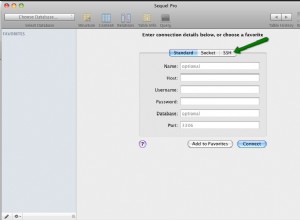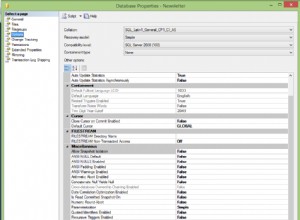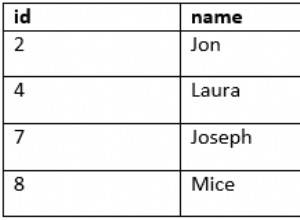Skonstruowałem test, który porównuje PRZESUNIĘCIE, kursory i ROW_NUMBER(). Moje wrażenie z ROW_NUMBER(), że prędkość byłaby spójna, niezależnie od tego, gdzie jesteś w zestawie wyników, jest poprawne. Jednak ta prędkość jest znacznie wolniejsza niż PRZESUNIĘCIE lub KURSORA, które, jak również mam wrażenie, są prawie takie same pod względem prędkości, obie zmniejszają się wraz z postępem końcowego wyniku.
Wyniki:
offset(100,100): 0.016359
scroll(100,100): 0.018393
rownum(100,100): 15.535614
offset(100,480000): 1.761800
scroll(100,480000): 1.781913
rownum(100,480000): 15.158601
offset(100,999900): 3.670898
scroll(100,999900): 3.664517
rownum(100,999900): 14.581068
Skrypt testowy używa sqlalchemy do tworzenia tabel i 1000000 wierszy danych testowych. Następnie używa kursora psycopg2 do wykonania każdej instrukcji SELECT i pobrania wyników trzema różnymi metodami.
from sqlalchemy import *
metadata = MetaData()
engine = create_engine('postgresql://scott:[email protected]/test', echo=True)
t1 = Table('t1', metadata,
Column('id', Integer, primary_key=True),
Column('d1', String(50)),
Column('d2', String(50)),
Column('d3', String(50)),
Column('d4', String(50)),
Column('d5', String(50))
)
if not engine.has_table('t1'):
conn = engine.connect()
t1.create(conn)
# 1000000 rows
for i in range(100):
conn.execute(t1.insert(), [
dict(
('d%d' % col, "data data data %d %d" % (col, (i * 10000) + j))
for col in range(1, 6)
) for j in xrange(1, 10001)
])
import time
def timeit(fn, count, *args):
now = time.time()
for i in xrange(count):
fn(*args)
total = time.time() - now
print "%s(%s): %f" % (fn.__name__, ",".join(repr(x) for x in args), total)
# this is a raw psycopg2 connection.
conn = engine.raw_connection()
def offset(limit, offset):
cursor = conn.cursor()
cursor.execute("select * from t1 order by id limit %d offset %d" % (limit, offset))
cursor.fetchall()
cursor.close()
def rownum(limit, offset):
cursor = conn.cursor()
cursor.execute("select * from (select *, "
"row_number() over (order by id asc) as rownum from t1) as foo "
"where rownum>=%d and rownum<%d" % (offset, limit + offset))
cursor.fetchall()
cursor.close()
def scroll(limit, offset):
cursor = conn.cursor('foo')
cursor.execute("select * from t1 order by id")
cursor.scroll(offset)
cursor.fetchmany(limit)
cursor.close()
print
timeit(offset, 10, 100, 100)
timeit(scroll, 10, 100, 100)
timeit(rownum, 10, 100, 100)
print
timeit(offset, 10, 100, 480000)
timeit(scroll, 10, 100, 480000)
timeit(rownum, 10, 100, 480000)
print
timeit(offset, 10, 100, 999900)
timeit(scroll, 10, 100, 999900)
timeit(rownum, 10, 100, 999900)




